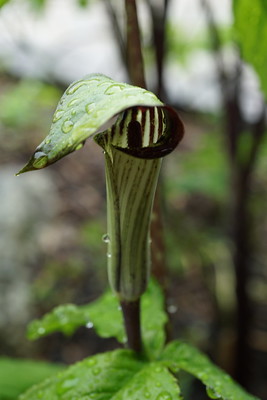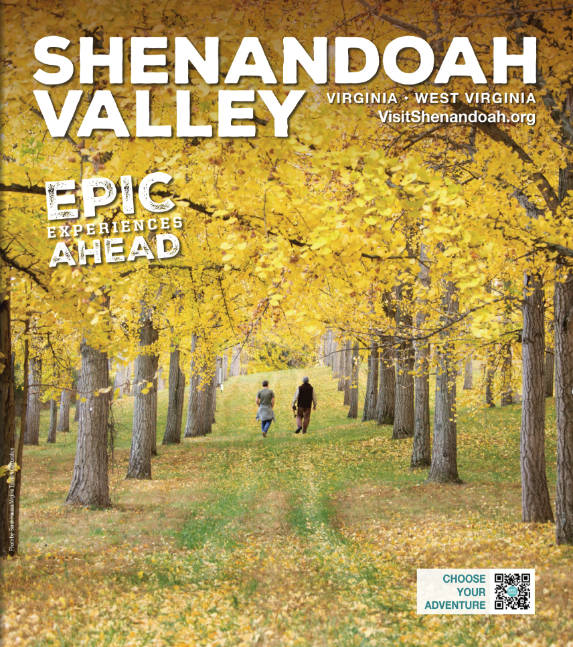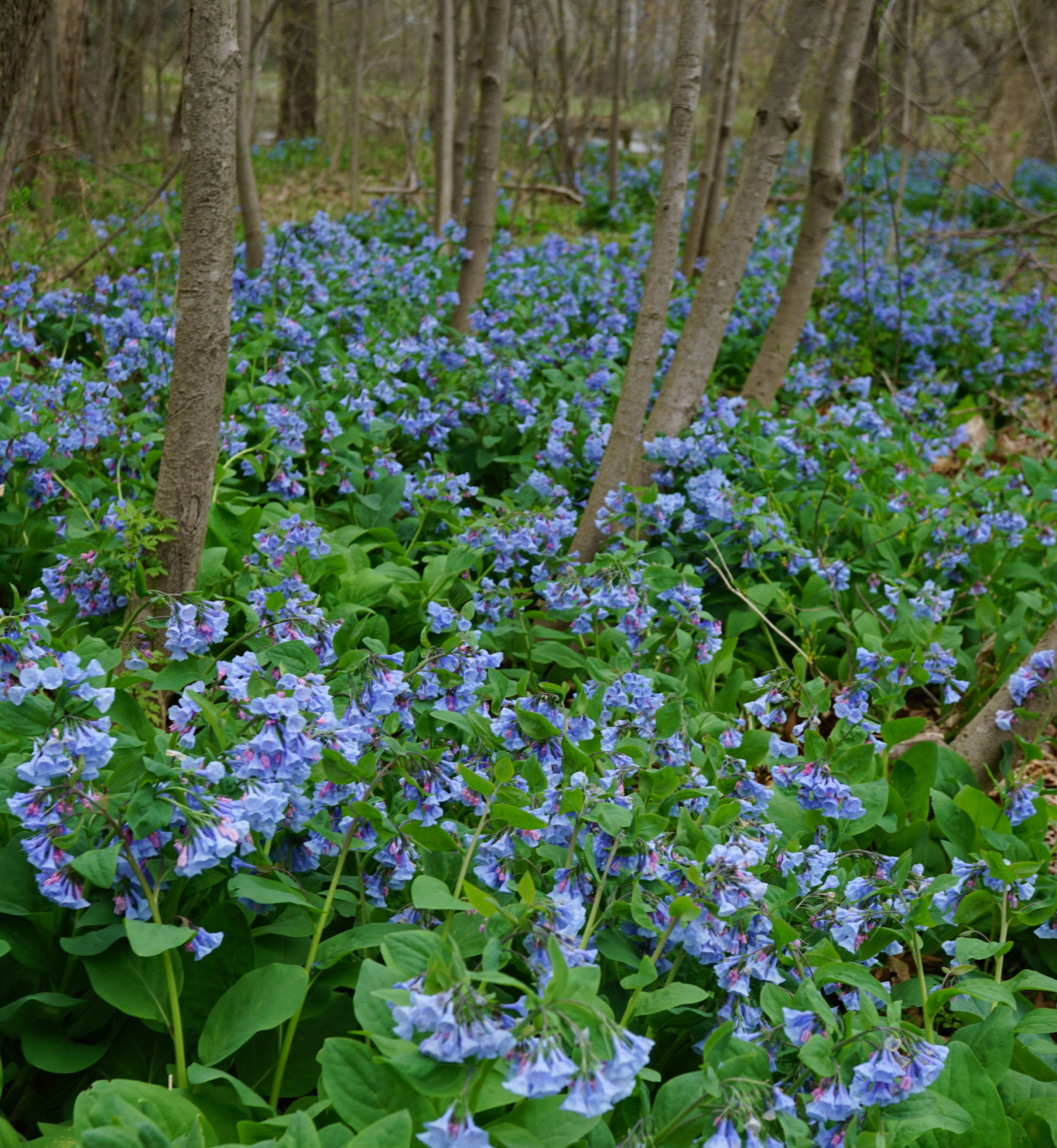Spring Equinox is fast approaching but often the wildflowers don’t wait until then to make their arrival. For that, we are thankful, as new blooms are a reminder of fresh starts and the warm weather to come. Indeed, we are wild for wildflowers in the Shenandoah Valley!
Early Bloomers
Among the first wildflowers to bloom are Bloodroot (Sanguinaria canadensis) and Large-Flowered Trillium (Trillium grandiflorum), which are easy to spot on the forest floor. Bloodroot’s white buds pop among the dead branches and leaves, and the three-leaf pale pink Trillium is an exciting, easy find as well.
Dutchman’s Breeches (Dicentra cucullaria) are dainty white-to-light-pink flowers that resemble upside down parachute pants (for the 90’s kids) or pantaloons. Several hanging on a line – or stem, emerge from a fern-like mound in moist understory.
Usually found in big groupings are the beautiful Virginia Bluebells (Mertensia verginica), and they bloom from March through June in the shade of the forest. Those are Bluebells lining a trail in Shenandoah National Park pictured above.
If you’re counting tree blooms as wildflowers (which we do), it’s the bright pink buds of the Redbud (Cercis canadensis) that appear first, followed by Virginia’s tree, the Dogwood (Cornus florida).
One tree bloom we plan a big event around is the apple blossom. Celebrate the beauty and its fruit during the Shenandoah Apple Blossom Festival in Winchester, Virginia. April 22 kicks off the 95th year of the festival and promises to be one of its best yet as traditional activities make their return. Join in the fun of the parades, wine fest, the midway, veterans dinner, celebrity sightings, themed party nights, marching bands, and so much more. The festival concludes May 1.
Mid-to-Late Spring Bloomers

Jack-in-the-Pulpit. Shenandoah National Park.
Jack-in-the-Pulpit (Arisaema triphyllum) is not an easy wildflower to spot. It’s not flashy, and therefore, not eye-catching. No, this beauty blends well with other emerging greenery and bark as it resembles both. From the stem the “pulpit” rises in a cylindrical shape and a canopy droops over it. Inside hides a dark maroon spadix … “Jack,” if you will. This wildflower produces a cluster of red berries that are quite attractive to birds and small critters.
An exciting find is the Pink Lady’s Slipper (Cypipedium acaule) or its sister, the Yellow Lady Slipper, of the orchid family. It is dainty and delightful. If you go in search of them, try April through May and look beneath conifers as they appreciate acidic soil.
Wild Azaleas (Rhododendron spp.) and Mountain Laurel (Kalmia latifolia) begin to flower late May through June, and they’re super easy to spot. Both are shrubs that can grow to heights of up to 15 feet. Their large flowers range from white to pink to purple. The plants are easily confused for one another, but a discerning eye will notice a Mountain Laurel’s umbrella shaped flowers are quite different from the Wild Azalea’s smaller flower with multiple eyelash-like stamen.
Wildflower Hikes in Shenandoah National Park
One of the best places to hike in search of wildflowers is Shenandoah National Park. In fact, there is a Wildflower Calendar specifically for the park to help you know when to look for each species. Shenandoah is home to more than 850 species of flowering plants; keep an eye peeled for the beauty!
Among the best Shenandoah National Park trails for spotting wildflowers are those near a water source. Consider waterfall hikes like White Oak Canyon and Rose River, or Riprap which crosses several streams.
Save the date for Shenandoah’s Wildflower Weekend May 14 and 15. Park admission applies. Another great time to look for the early bloomers is April 16, a fee-free day in honor of National Park Week.
Take note that it is illegal to uproot or cut any plants inside national parks. It is also preferred that you stay on the trails to observe wildflowers where you are. If there is a way to step on logs or large rocks to gain a better vantage point, you may do so.
All photos courtesy of Shenandoah National Park.






